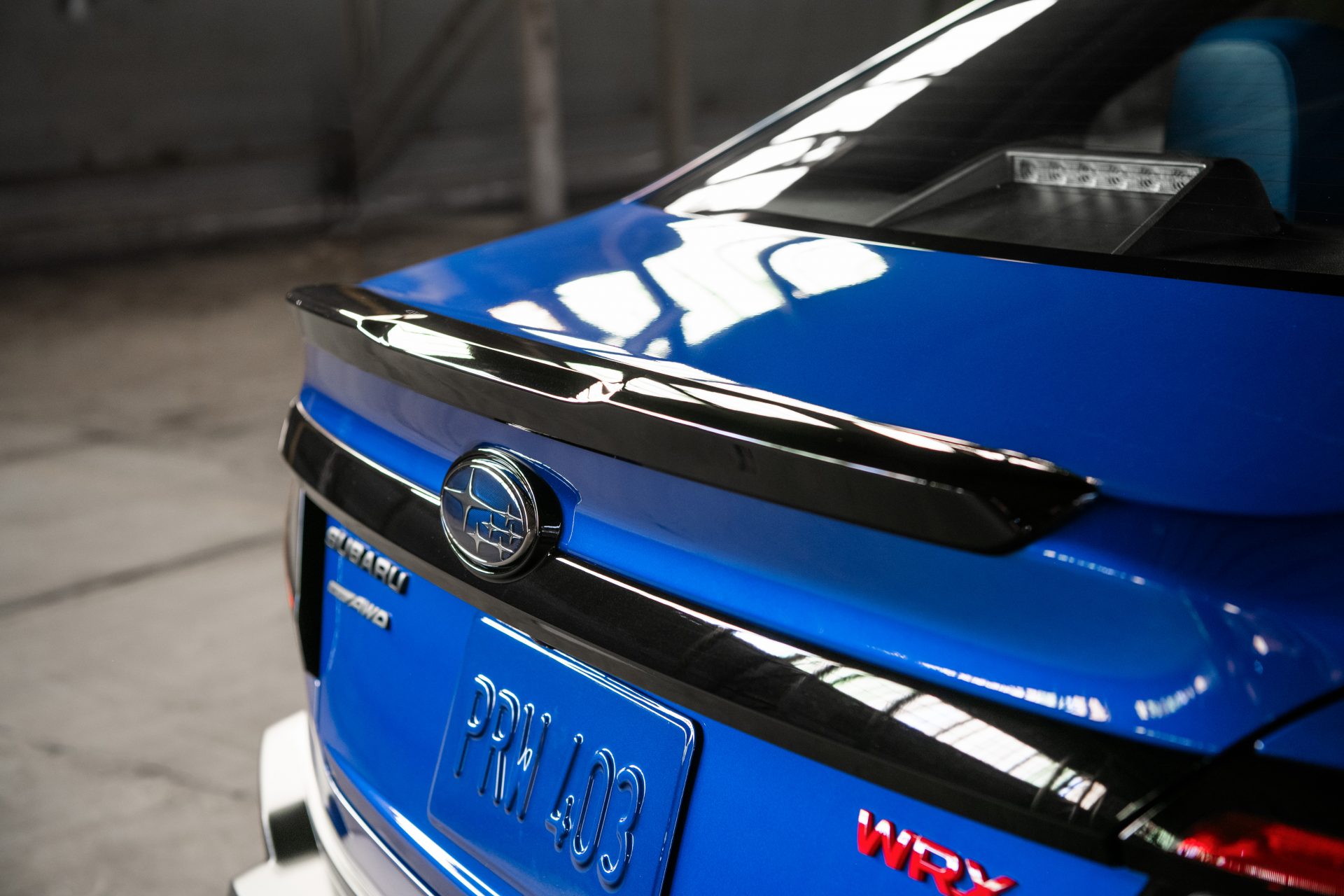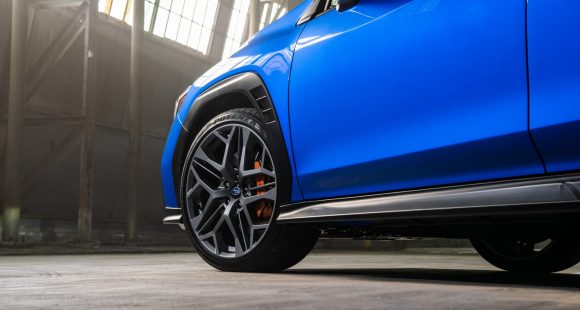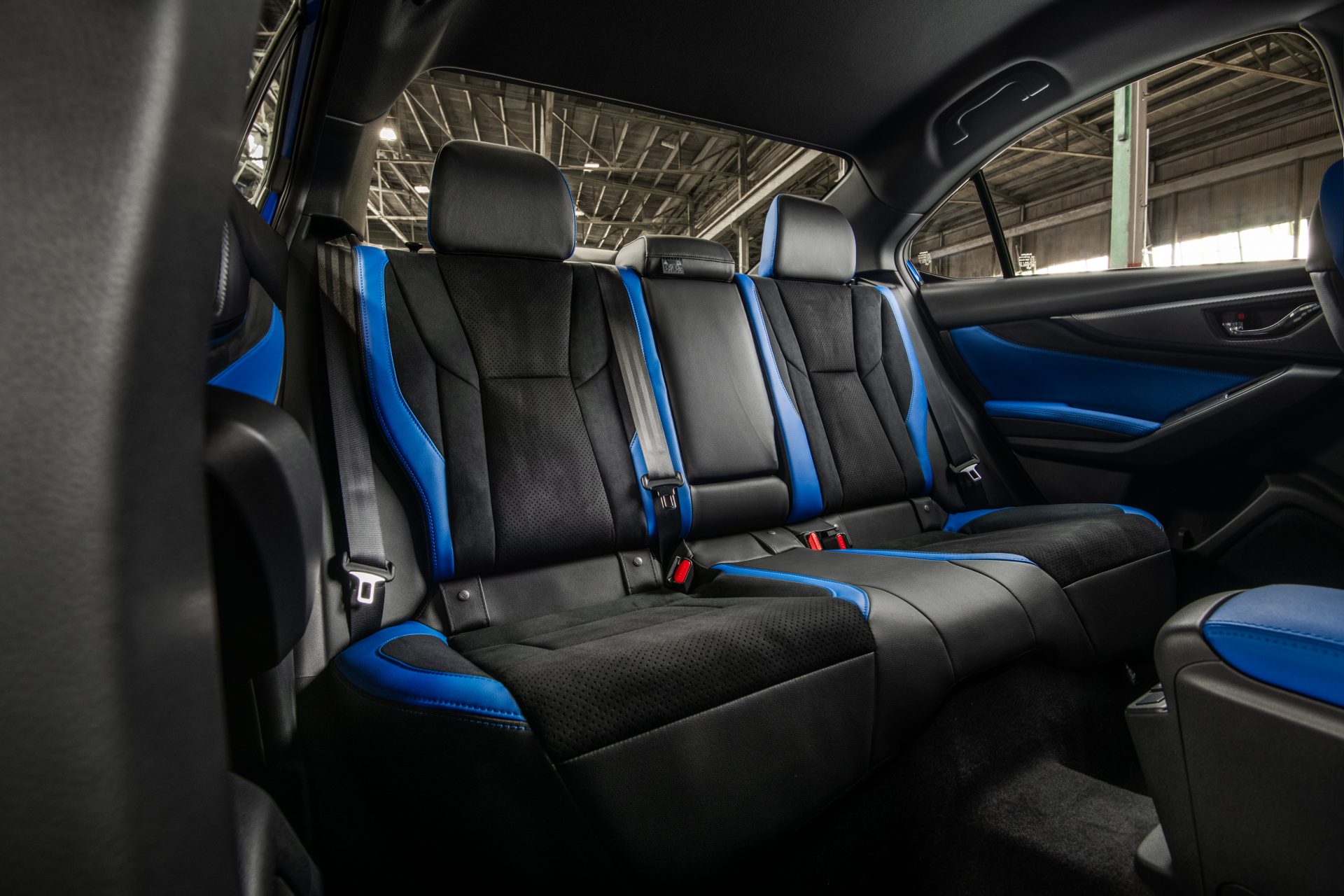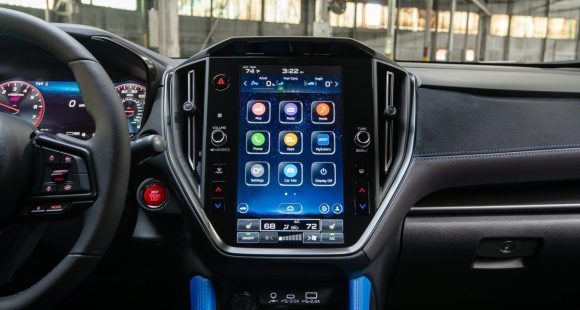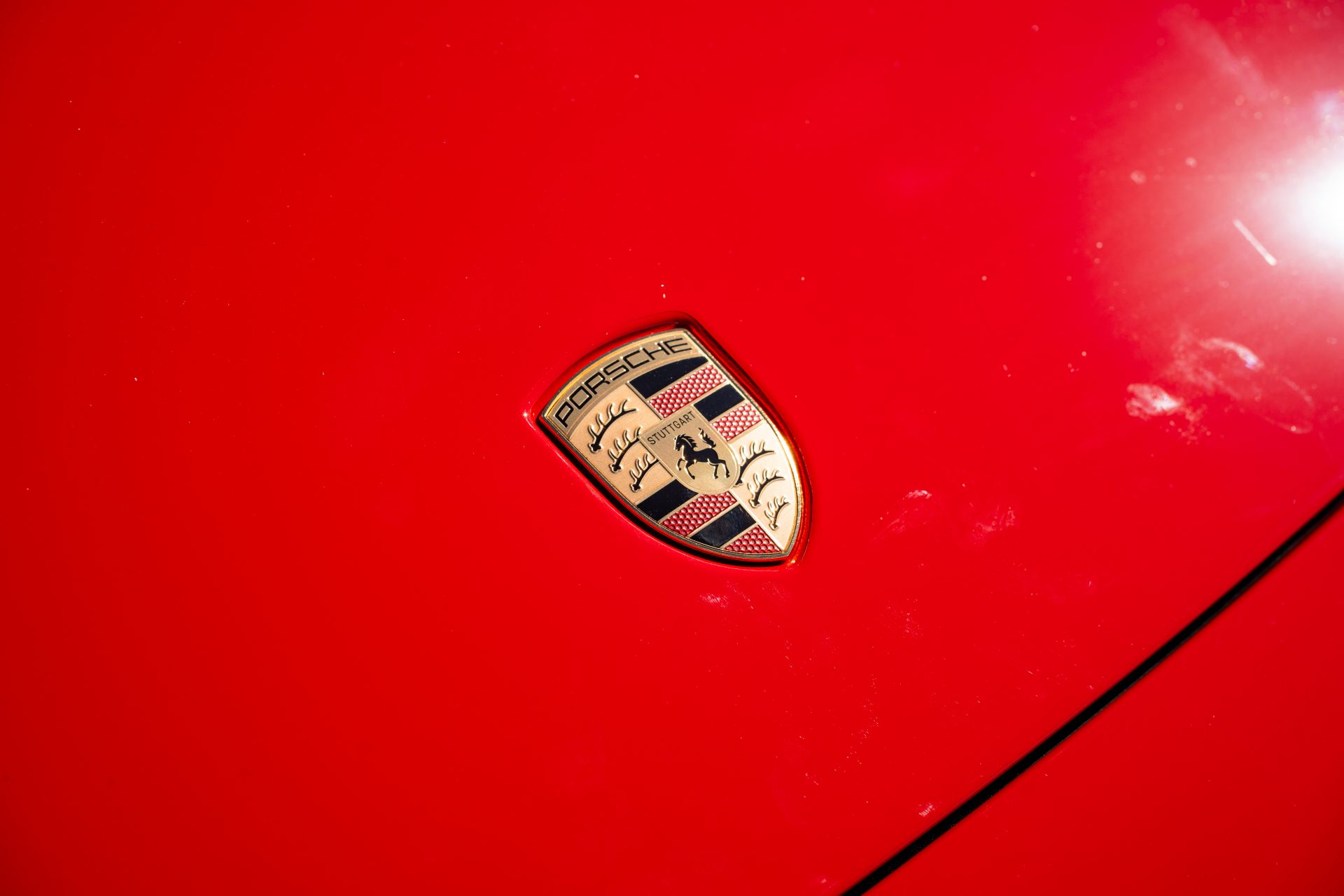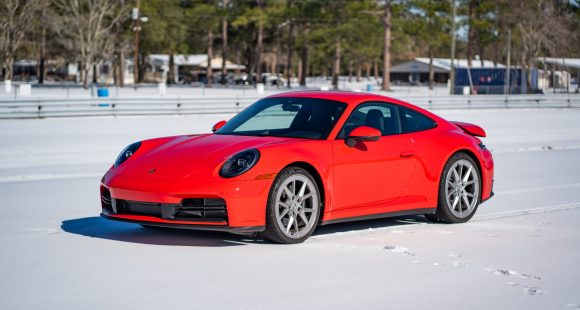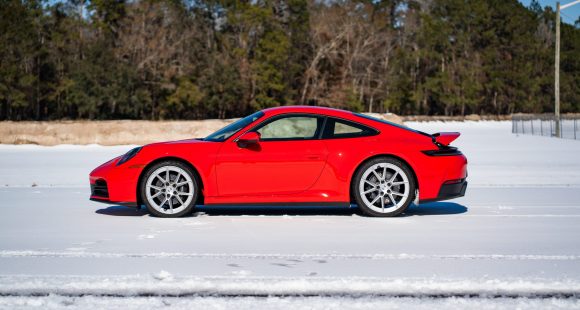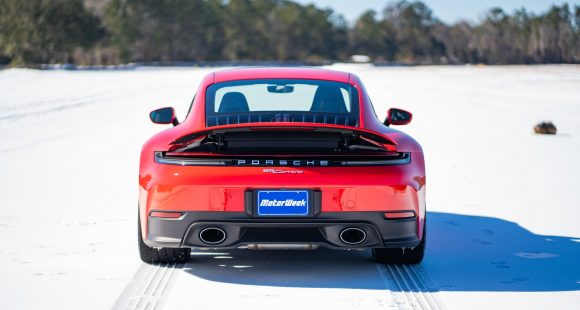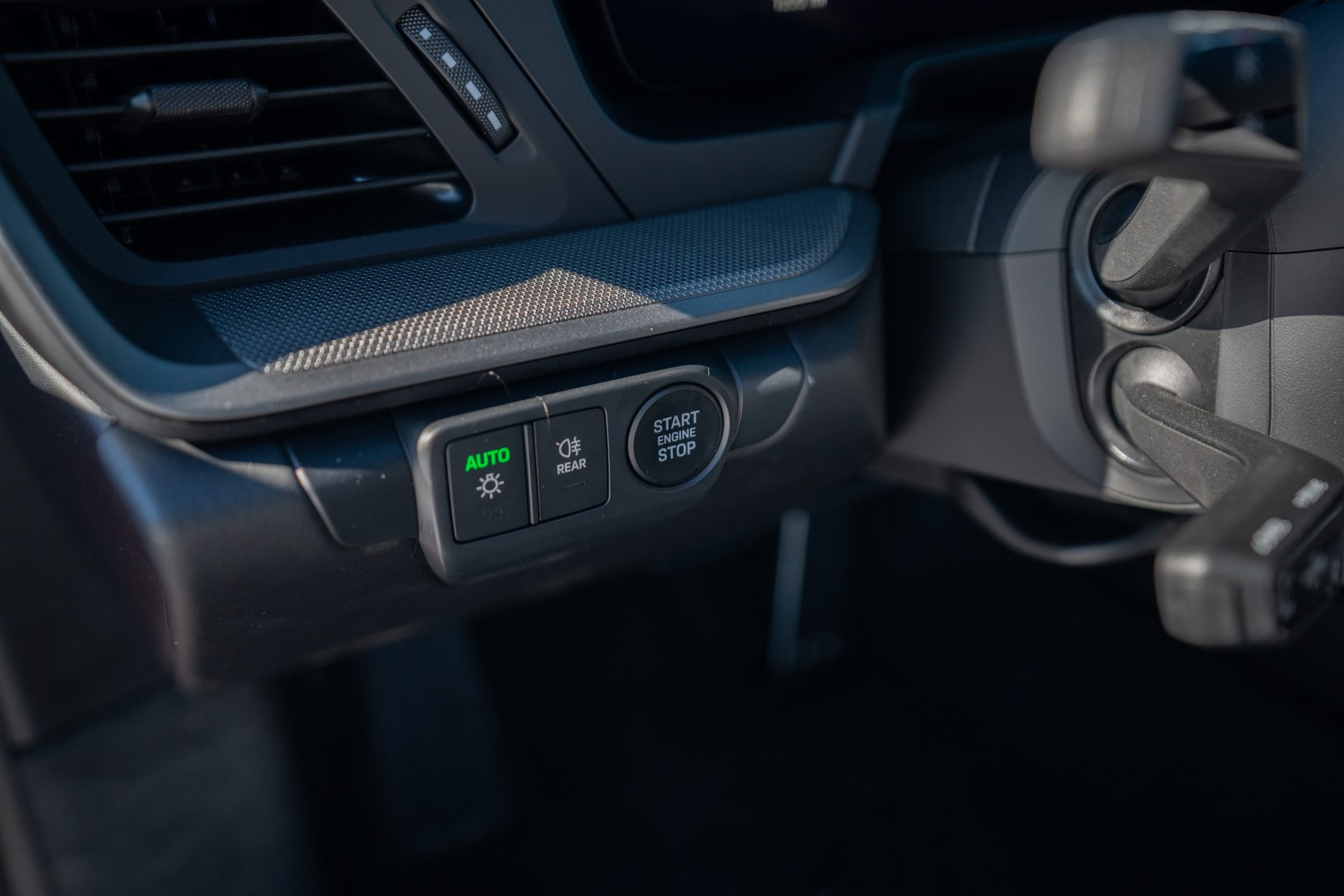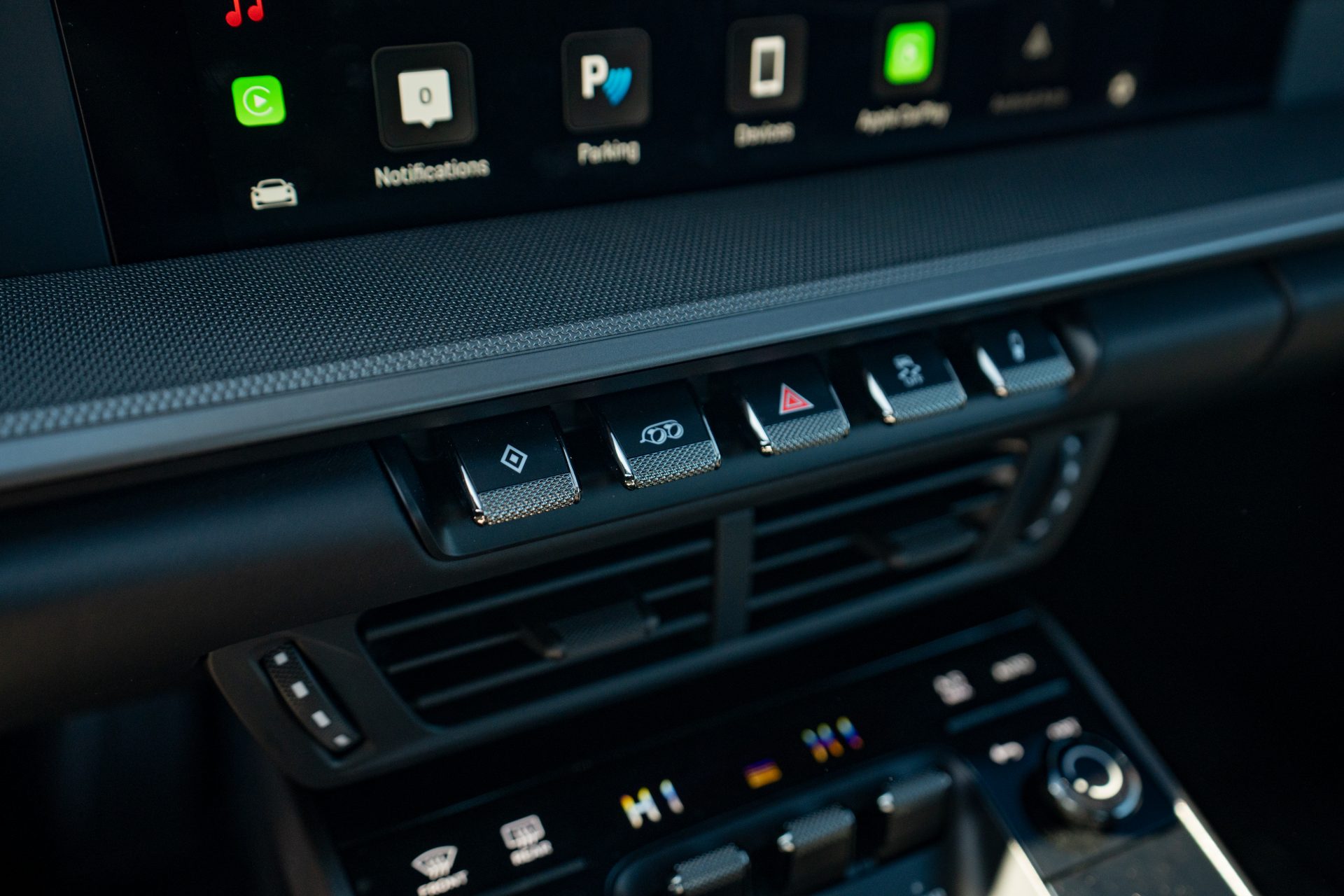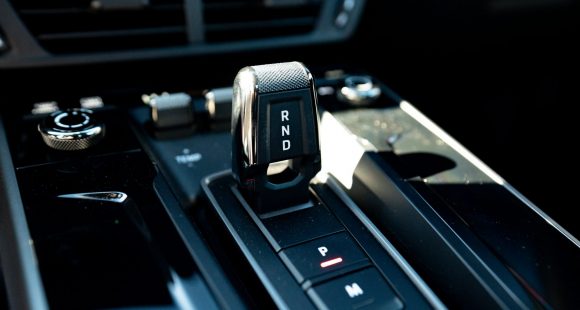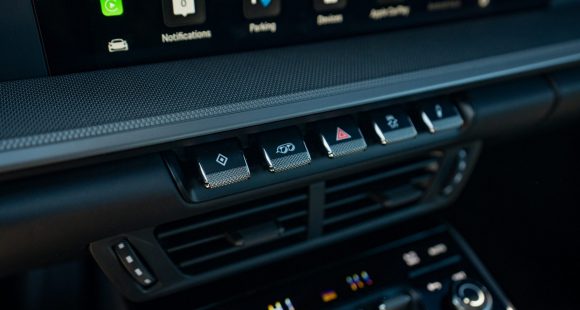2012 Fiat 500 Abarth
We’ve spent quite a bit of time in the tiny little Fiat 500, both in coupe and convertible form. And have found that if you can handle the ultra-cute looks, the 500 offers a ton of fun for the money. Well, if you’re looking for even more fun for not a lot more money, this Fiat 500 Abarth may just be the ticket. So let’s punch it and find out!
Here at MotorWeek, we’re all about getting the best performance bang for our buck, and the 2012 Fiat 500 Abarth embodies that sentiment in spades. For starters, this “small, but wicked” Fiat gets a huge boost in power. Under the hood is a thoroughly beefed up version of the MultiAir 1.4-liter I4 found in the standard 500. But, here turbo boost output by 59 horsepower to 160; that’s 114 ponies per liter! Even more impressive, torque nearly doubles to 170 pound feet.
The Abarth name may be new to most, but the company has a 60 year tradition of pumping performance out of Italian ride. Now as Fiat’s inhouse tuner, Abarth has done a lot more than just slap on a turbo and call it a day. The 500 Abarth is a total transformation. The suspension has been thoroughly tweaked with new Koni Frequency Selective Damping shocks, stiffer springs, and a solid rear stabilizer bar and all told, sits half an inch lower.
 Just punch the Sport button for maximum engine output, quicker throttle response, and more steering feel, and you’re ready to blast through the corners. Under-steer has been almost eliminated, turn-in is insanely quick, and the car flat out sticks. More fun? Definitely! Faster? Well, let’s see. Fast is always a relative term, and 0-60 time of 7.7-seconds is not exactly supercar territory, but it is certainly much quicker than previous 500’s that we’ve tested, almost 2-seconds faster, actually.
Just punch the Sport button for maximum engine output, quicker throttle response, and more steering feel, and you’re ready to blast through the corners. Under-steer has been almost eliminated, turn-in is insanely quick, and the car flat out sticks. More fun? Definitely! Faster? Well, let’s see. Fast is always a relative term, and 0-60 time of 7.7-seconds is not exactly supercar territory, but it is certainly much quicker than previous 500’s that we’ve tested, almost 2-seconds faster, actually.
The quarter mile is obviously quicker as well, at 15.8-seconds and 89 miles per hour. Off the line, the Abarth puts the power down fairly effectively with no torque steer. First and second gears pass quickly, but third is a real workhorse, taking you through most of the ¼ mille. A Ferrari it’s not, but somehow it’s almost just as thrilling. And the sound is great, even if it’s not from a V-12.
Transmission is 5-speed manual only. It needs a 6th gear! Still, the upgraded unit worked flawlessly throughout our testing. Stopping is also improved, bringing our Abarth to a halt 2-feet sooner than a 500 Sport at 120-feet from 60.
We all know that Italians like to do things with style, and the Abarth certainly gets a runway worthy makeover, but rest assured there’s function to go along with that form. Starting with a 500 Sport, the Abarth gets a more vertical front fascia, to make more room in the engine bay for turbo plumbing, and to allow room for larger air intakes. Down the sides are extended skirts, and on our test car, painted aluminum 17-inch wheels which replace the standard 16’s. In back, there’s a re-designed fascia, with black lower diffuser and double dual-tipped exhaust; and of course a big rear spoiler. And if all of that weren’t enough, there are Abarth scorpion shields on just about every body panel, though the red mirror caps and body side stripes are optional.
 We already loved the purposeful interior design of this modern Cinquecento, and now there’s even more amore, with added Abarth elements like a nice thick flat-bottom steering wheel, black leather with red stitching on the gauge hood and shifter, aluminum pedal covers, and body hugging performance seats. Our car had the optional Rosso Nero leather. We’re still not fans of the concentric gauge array, or the dash top TomTom nav, but have no qualms at all about the new turbo boost gauge. While much more comfortable for two than four, the 500 remains surprisingly practical with its 9.5 cubic-feet of trunk space expanding to 26.8 with rear seats folded.
We already loved the purposeful interior design of this modern Cinquecento, and now there’s even more amore, with added Abarth elements like a nice thick flat-bottom steering wheel, black leather with red stitching on the gauge hood and shifter, aluminum pedal covers, and body hugging performance seats. Our car had the optional Rosso Nero leather. We’re still not fans of the concentric gauge array, or the dash top TomTom nav, but have no qualms at all about the new turbo boost gauge. While much more comfortable for two than four, the 500 remains surprisingly practical with its 9.5 cubic-feet of trunk space expanding to 26.8 with rear seats folded.
Government Fuel Economy Ratings are 28-City and 34-Highway; expect 31 miles-per-gallon of Premium in everyday driving. The Energy Impact Score is quite good at 10.6-barrels of oil consumed per year with annual CO2 emissions of 4.7-tons. As for pricing, the 2012 Fiat 500 Abarth retails for $22,700; that’s about 5-grand over a 500 Sport, but it’s money well spent, as you are definitely getting Filet performance on a PBJ budget which is exactly the way we like it here at MotorWeek. The Abarth is the most fun we’ve had in a car that costs under $25,000, in some time. So, buy two, they’re small!
Specifications
- Engine: MultiAir 1.4-liter I4
- Horsepower: 160
- Torque: 170 lb-ft.
- 0-60 mph: 7.7 seconds
- 1/4 mile: 15.8 seconds @ 89 mph
- EPA: 28 mpg city/ 34 mpg highway
- Energy Impact: 10.6 barrels oil/yr
- CO2 Emissions: 4.7 tons/yr
2025 Subaru WRX tS
Subaru’s “World Rally eXperimental” Gets Tecnica-Tuned Tech
Building on its global rally heritage, WRX has been a standalone Subaru nameplate, marketed separately from garden variety Impreza, for two generations now. And while the current WRX still lacks the full STI treatment, this WRX tS serves up some of that high-performance spice we’ve been longing for.
Before we go flat out into our Track Test of this 2025 Subaru WRX tS, lets open the Subaru dictionary so we’re all on the same page. “tS” stands for “tuned by STI;” and “STI” is an acronym for “Subaru Tecnica International,” the brand’s high-performance sub-group best known for upgrading the WRX— oh, that stands for “World Rally eXperimental,” in case you didn’t know.
All that said, STI has been largely dormant for this WRX generation, but this tS sprinkles more of their engineering magic into the mix. No, that doesn’t mean extra power, but does mean significant chassis-related improvements.
First, electronically controlled dampers, adjustable through the 11.6-inch tablet-style infotainment screen. That meant a softer “comfort” mode on the 10+ hour commute to and from Savannah’s Roebling Road Raceway. But once we were there, it was the firmer “Sport+” setting all the way, heightening response from the WRX’s throttle and already quick dual-pinion power steering system. There’s still some body roll for rally-esque weight transfer, but it’s well sorted and provides the “toss-ability” you want in a WRX.
Though if you do autocross your tS, which we implore you to do, you might feel the six-piston front, two-piston rear Brembo brakes first. The bite is strong, giving good rotation in the corners and plenty of “halt” for this 3,400 lb. compact with minimal fade, keeping us on track all week…until some unfortunate winter weather passed overhead. No worries here, as Subaru’s Symmetrical All-Wheel-Drive system got us to the track for some powdered deserts: Frosted donuts served up Michelin style, a set of winter tires different from the grippy Bridgestone Potenza S007 rubber the tS typically rides on. Some prior hot laps of California’s Sonoma Raceway gave credence to those Bridgestones, and showed us what this hot-compact can do in ideal conditions.
It’s well sorted and provides the “toss-ability” you want in a WRX.
Other tS enhancements are cabin-based, namely these beautiful blue Recaros. Most of our staff appreciated their moderately-aggressive bolstering on both street and track. And they’re even heated, too. Another tS-only appointment is this 12.3-inch digital gauge display. It mimics the standard analog gauges with some additional info, but can switch to a navigation mode for more convenient route guidance.
We do wish our tS came in the new Galaxy Purple or the trademark World Rally Blue, but this Crystal White paint wasn’t too shabby, contrasting its Cherry Blossom Red badging and blacked-out lip spoiler. Otherwise, the tS is like any other WRX, down to the hood scoop funneling air to the top-mounted intercooler.
Underneath is the same turbocharged 2.4-liter flat-four in all other trims, boxing at 271 horsepower and 258 lb-ft of torque. The freak winter weather stopped straight-line testing, but a 0-60 time estimate of 5.5 seconds is about as spry as you realistically need, pulling strong through most of the tach; though the 6,000 RPM redline required attentive shifting of the six-speed box, which the tS comes exclusively with. The throws are precise, if a little long, and the clutch is wonderfully weighted.
With discontinuation of the Base trim, pricing for the WRX now starts with Premium at $36,920. The tS is at the top of the lineup with the automatic-only GT, both starting at $46,875. All WRXs continue to be made in Gunma, Japan.
If you’re an enthusiast itching to do the tuning yourself, perhaps the 2025 Subaru WRX tS is not for you. But if you want a plug-and-play experience, this is it. While it won’t exactly bestow the loose-cannon, top-level driving skills exhibited by famous WRC drivers upon you, the tS moves this WRX’s game in a direction we’ve so desperately wanted Subaru to take.
Specifications
As Tested
- Engine: 2.4-liter flat-four
- Tranmission: 6-speed manual
- Horsepower: 271
- Torque: 258 lb-ft
2025 Porsche 911 Carrera
Ever Evolving 911 Reaches New Heights
The Porsche 911 has existed for 60 years now! Amazing! And, you could argue that major changes over all those years have been relatively few, as constant incremental improvement is more the way that Porsche does business. With that in mind, let’s hit the track in the latest 911 and see what constant improvement means for 2025.
We’ve driven so many 911s here at MotorWeek, each seemingly more special than the last, so it’s a bit refreshing to be ripping around Savannah’s Roebling Road Raceway in a 2025 Porsche 911 that’s about as close as you can get to base these days. And the fact that it’s just as fun as all those exclusive pieces says a lot about how far the 911 has come. Perhaps it also speaks to how much a base 911 will set you back today as well; more on that later.
For now, we’re just thinking about the next apex, holding steady throttle as we approach, and getting on it way sooner than you’d expect without upsetting anything, as the 911 rockets off the corner thanks to tremendous grip and a PDK trans that finds the perfect gear before we even gave it a thought. Even with very cold track temps, we never struggled for grip or battled any wheelspin coming off of corners. And trying to land it in that perfect spot in braking zones is easy with strong brake performance that was predictable and consistent lap after lap; no wandering, and great feedback too.
Yes, even the standard 911 is near pure perfection on a racetrack. It gives you all the right feedback, stays incredibly flat through corners, makes you always feel totally in control, and again is just plain fun. Unless you’re chasing lap times, there’s really no need to head further up the 911 tree. Though it is worth noting the few upgrades that were on our Carrera did help the situation a little. The 20- and 21-inch Carrera S wheels enabled plenty of grip from the 305 Pirelli P Zero tires, the Sport Chrono Package allows 0-60 sprints of 3.7 seconds, an extended range fuel tank meant we could lap all day without having to fill up, and the fantastic Sport Seats provided great support and better comfort than we remember experiencing in a 911. The Sport Exhaust system didn’t add anything to performance, but made things sound a whole lot better, and the oval silver tips look great too.
We never struggled for grip or battled any wheel spin coming off of corners.
Our track time got cut short thanks to a rare snowstorm in Coastal Georgia, but the white stuff and blue sky made the perfect backdrop for our Guards Red Carrera. Exterior tweaks for what is officially the 992.2 include a reshaped front fascia with improved aerodynamics. All front lighting is now contained within the Matrix Design LED headlight housing. The rear fascia has also been smoothed out, the license plate moved higher, and Porsche 3D block lettering spelled out across the back beneath the active rear spoiler and new decklid grille.
Even without Turbo in the name, the standard 911 engine is indeed a turbo these days, a 3.0-liter flat-six twin-turbo delivering 388 horsepower and 331 lb-ft strictly to the rear wheels in the Carrera Coupe.
Inside the cabin, the 911 continues its slow crawl towards the modern, now including a 12.6-inch fully digital gauge display and a start button located on the left side of the steering wheel, with drive modes easily accessible on the wheel itself. In another no brainer move, Porsche now makes the rear seat a no cost option, so you can choose if you want it or not.
Government Fuel Economy Ratings are 18 City, 25 Highway, and 21 Combined. That’s only slightly worse than average for the Energy Impact Score; 14.2 barrels of annual oil consumption with 7.0 tons of CO2 emissions.
The good news is this 911 had the fewest number of options of any Porsche that we’ve tested in some time, and it was still plenty awesome; the bad news is, a base Porsche 911 Carrera Coupe now starts at $122,095.
But can you really put value on “the force,” this mythical power that Porsche seems to have, that somehow turns average drivers into great ones? It’s useless to resist as far as we’re concerned, as it only gets better with the 2025 Porsche 911 Carrera.
Specifications
As Tested
- Engine: 3.0-liter twin-turbo flat-6
- Transmission: 8-speed PDK
- Horsepower: 388
- Torque: 331 lb-ft















